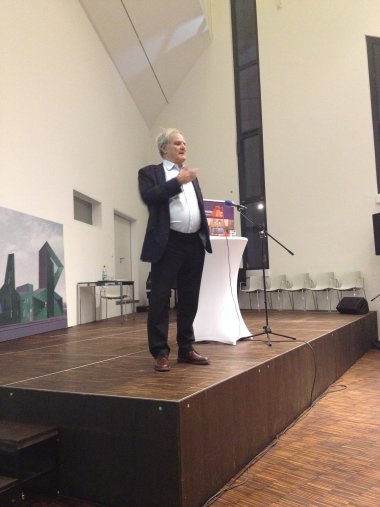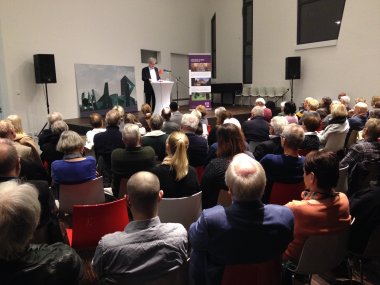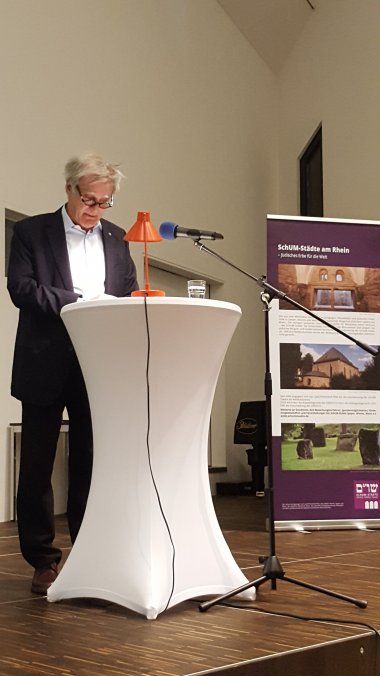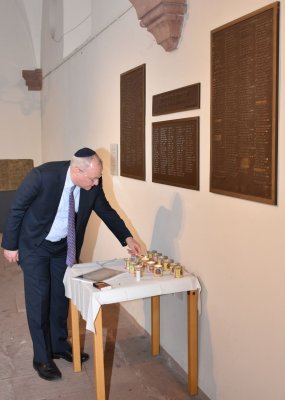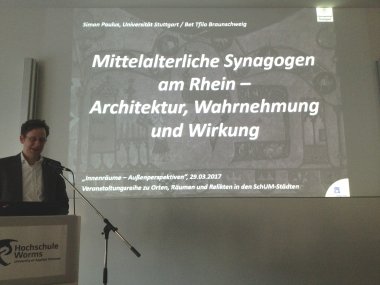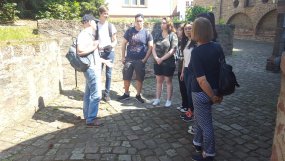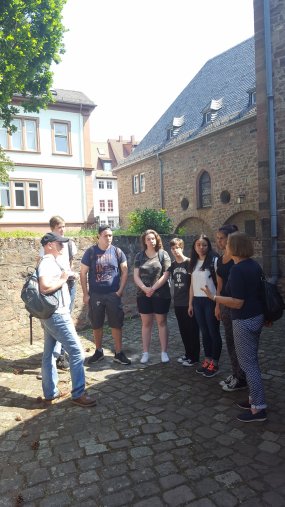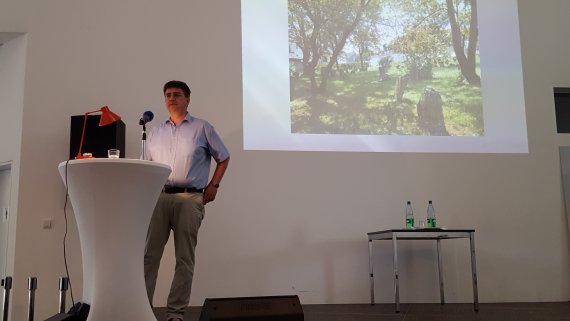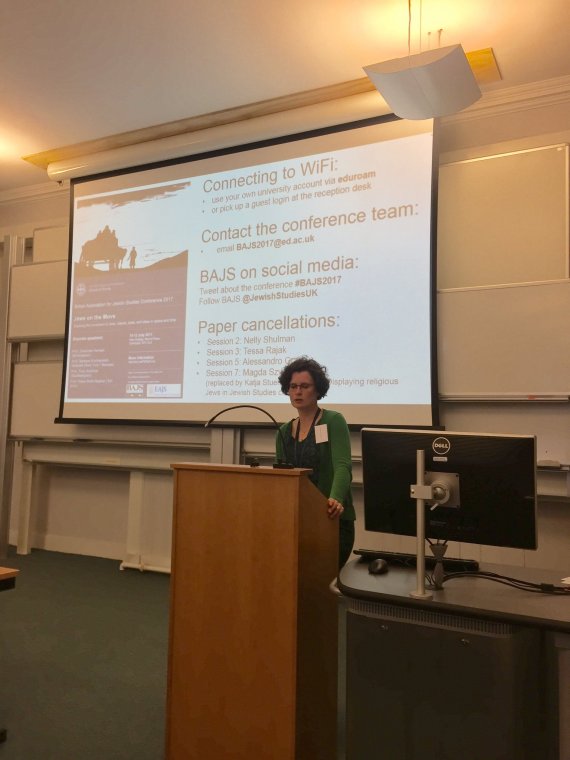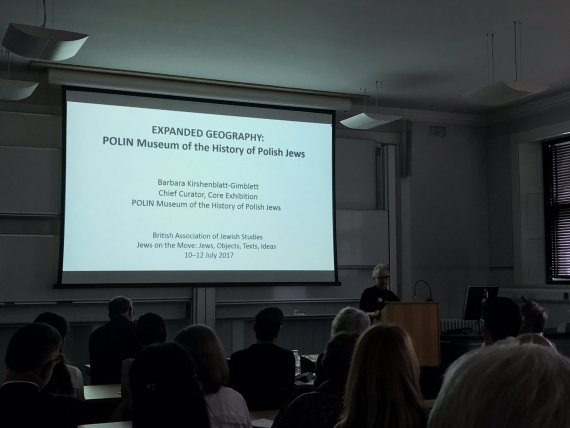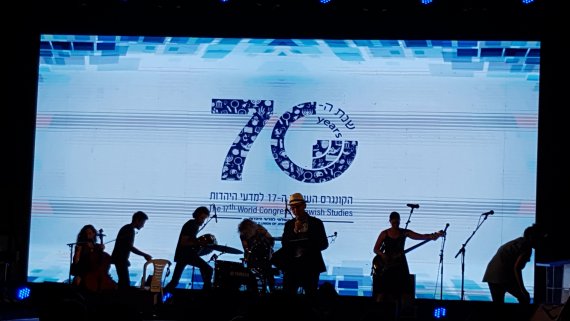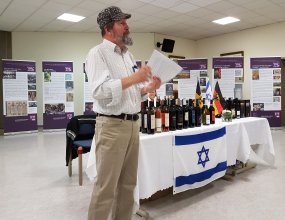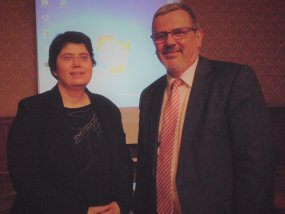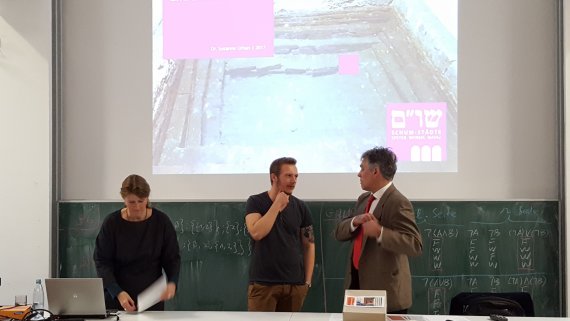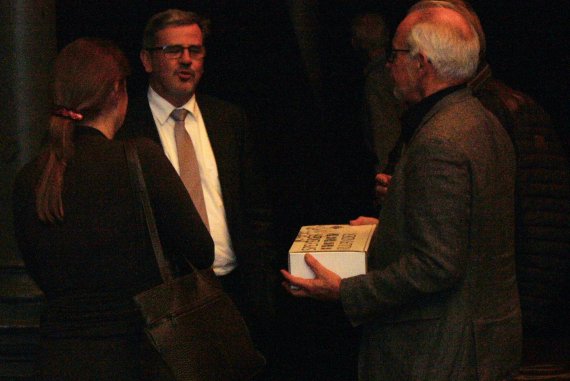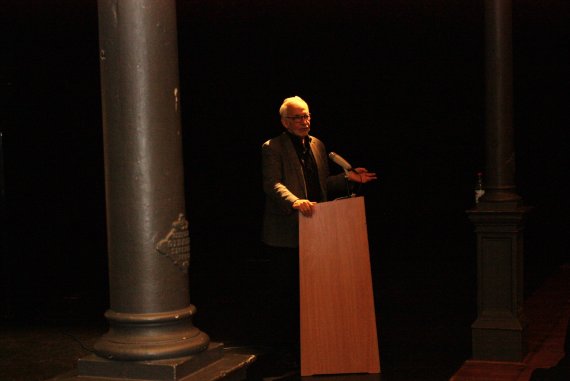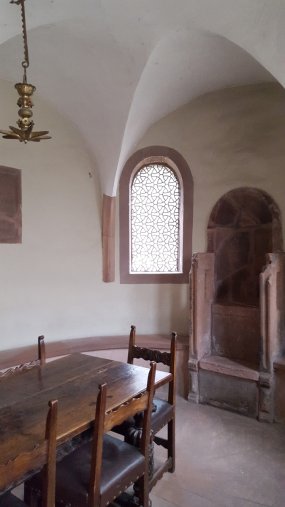Events: Retrospect
Lecture Prof. Julius H. Schoeps, March 9, 2017, Mainz
- Prof. Schoeps Mainz 03 20171,86 MiB
- Prof. Schoeps Mainz 03 20172,49 MiB
- Prof. Schoeps Mainz 03 20172,18 MiB
Visit Michael Mail in Worms und Speyer, March 19 to 21, 2017
- Visit Michael Mail/ Remembrance Ceremony985,20 KiB
- Visit Michael Mail/ Remembrance Ceremony256,97 KiB
Visit Director Foundation for Jewish Heritage/ Member ICOMOS in ShUM-Cities. He visited the Jewish sites in Speyer and Worms to get a broader picture. He also met several of the stakeholders involved in the applicaton and discussed with them the status of the World Heritage Application .
Words and Wine: Judaism, Theatre Ludwigshafen, March 25, 2017
- Words and Wine, Theatre Ludwigshafen, 03/20173,38 MiB
- Words and Wine, Theatre Ludwigshafen, 03/20171,42 MiB
- Words and Wine, Theatre Ludwigshafen, 03/20171,44 MiB
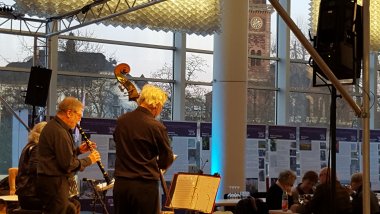
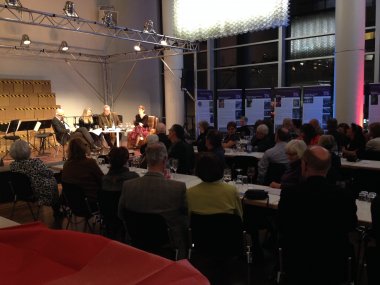
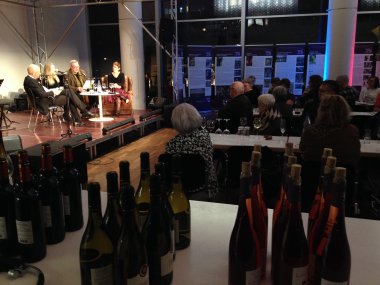
Manager Tilman Gersch in conversation with Hans Neu und Susanne Urban. Recitations from Literature and biblical texts. Music by De Roode Pelikan and a Cello-Quartett. The ShUM-Cities' exhibition on Wine and Judaism was also on display during the evening.
Lecture Dr. Ing. Simon Paulus on Architecture of Synagogues, Worms, March 29, 2017
Conference »Between Pogrom and Neighborhood«, Mainz, April 27 and 28, 2017
Lecture Prof. Michael Brocke, Speyer, May 11, 2017
- Speyer, May 11, 2017/ Prof. Brocke4,30 MiB
- Speyer, May 11, 2017/ Prof. Brocke4,28 MiB
- Speyer, May 11, 2017/ Prof. Brocke3,86 MiB
- Speyer, May 11, 2017/ S. Urban4,31 MiB
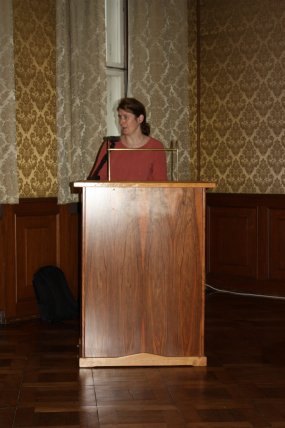
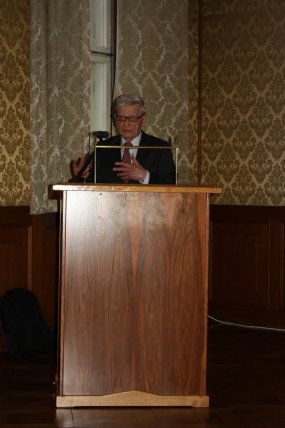
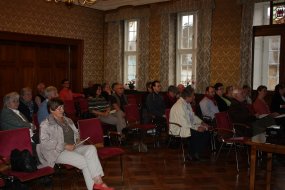
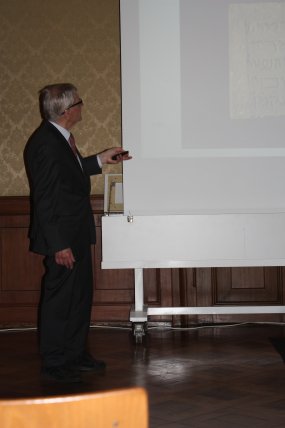
Prof. Michael Brocke illuminated the cemetery culture in Worms and Speyer in the Middle Ages. He compared architecture, design, ornaments and symbols, explained the inscriptions, decrypted biblical references, and highlighted similarities as differences in the burial culture of these two Shum communities.
Students Project: Rudi-Stephan-Gymnasium Worms, May 29 to June 2, 2017
The Rudi Stephan Gymnasium in Worms, together with the ShUM-Cities Ass., has given six students the chance to discuss topics that are central to ShUM in the so-called special school days. These topics include the cemetery culture using the example of the Holy Sand; questions on the subject of hostage-taking; and Piyyutim as well as fairy tales on Warmaisa. Barbara Steuer and Jürgen Pfitzner, supervising educators at the Gymnasium, emphasized: »With this approach of youths of the 11th grade to the legacy of ShUM, especially with regard to Worms, sensibility, curiosity and joy in the discovery of these centuries-old Jewish histories are to be aroused. We are sure that ShUM and here the old Jewish Warmaisa will occupy a permanent place in our schools.« The group presented their results at the town hall in Worms on June 2, 2017.
Opening of the Exhibition on Wine and Judaism, Hofloessnitz, Radebeul, June 18, 2017
- Einladung WuJ Radebeul4,06 MiB
- Plakat JuW Radebeul237,17 KiB
- Opening of Exhibition in Wine Museum Hofloessnitz, Radebeul, June 18, 20173,57 MiB
- Opening of Exhibition in Wine Museum Hofloessnitz, Radebeul, June 18, 20173,41 MiB
- Opening of Exhibition in Wine Museum Hofloessnitz, Radebeul, June 18, 20173,30 MiB
- Opening of Exhibition in Wine Museum Hofloessnitz, Radebeul, June 18, 20173,50 MiB
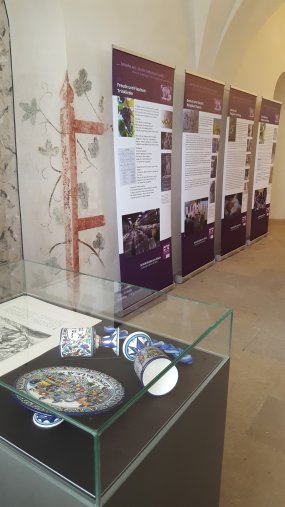
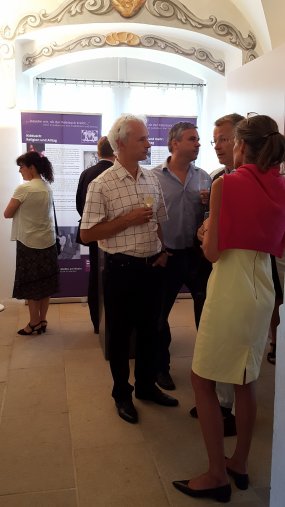
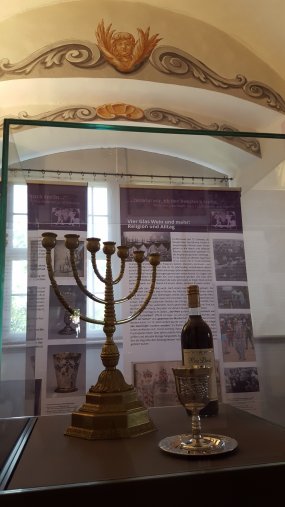
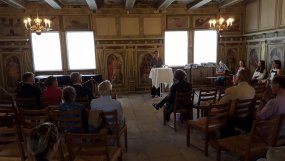
June 18, 2017: Hofloessnitz, a saxonian Foundation where the opening of the exihibition, curated by ShUM-Cities Ass., takes place. Opening remarks by Dr. S. Cramer (Head of Foundation, S. Urban (ShUM-Cities) and F. Andert (Head of Museum). Music by the Musicians High School and Wine from the Hofloessnitz.
Lecture Prof. Andreas Lehnardt, Mainz, June 22, 2017
Prof. Lehnardt described the medieval cemetery »Judensand« in Mainz as an extraordinary Jewish place. The placing of memorial gravestones on the presumed sites of the former tombs destroyed in pogroms is unique. In the course of the UNESCO application of the Shum-Cities, a comprehensive documentation of the approximately 200 gravestones of the Mainz memorial cemetery is planned in cooperation with the Directorate-General for Cultural Heritage (GDKE) in Rhineland-Palatinate and Prof. Michael Brocke from the Steinheim Institute Essen, Lehnardt announced to the interested audience.
Jews on the Move: Exploring the movement of Jews, objects, texts, and ideas in space and time, Edinburgh, July 10 to 12, 2017
Susanne Urban presented the history of the Worms' Machzorim from Würzburg to Worms and, after the Shoah, to Israel - it moved due to persecutions and the Shoah.
The conference was attended by representatives from England, Scotland, USA, Australia, New Zealand, South Africa, as well as Germany, Israel, Italy, the Netherlands, Austria, Poland, Switzerland, Spain and the Ukraine.
Jewish migration as well as the migration of objects and thoughts were discussed vividly and with multiple perspectives.
Barbara Kirshenblatt-Gimblett took as an example the migration of ideas and traditions in her Keynote Lecture ShUM. In ShUM, Ashkenazic Judaism had its focus. After the 14th century, as a result of persecutions and pogroms, the focus shifted to Poland, where traditions were continued by people who brought this or knew it from reports. ShUM migrated and ideally immigrated to other countries because it was significant.
https://britishjewishstudies.org/
Participance at the World Congress of Jewish Studies, Jerusalem, August 6 to 10, 2017
ShUM and the mediaeval Ashkenaz, as well as topics such as Mikwaot, education, memory and representation of Judaism in online projects were present at the 70th World Congress of Jewish studies. Participants in the Application as UNESCO World Heritage for the ShUM sites were present at the conference - from the Universities of Trier and Mainz as well as from the Heidelberg University of Jewish Studies to representatives of the Scientific Advisory Board or the Association. The panels on ShUM and the medieval Ashkenaz were extremely well attended.
The program is available at: https://drive.google.com/file/d/0B-zkgea53xmcelpYWE5YVE5Ecjg/view
World Heritage ShUM: Jewish monuments in Speyer, Worms and Mainz. Findings, challenges and current perspectives, Mainz, September 11, 2017
- Einladung Mainz 11_09_2017_Neue Synagoge303,92 KiB
- Event New Synagogue Sept 11, 20173,76 MiB
- Event New Synagogue Sept 11, 20173,07 MiB
- Scientific Advisory Board on Cemetery Judensand, Sept. 11, 20176,17 MiB
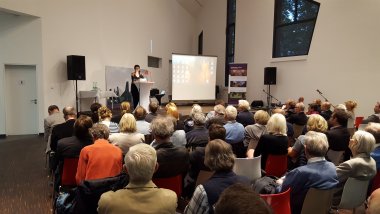
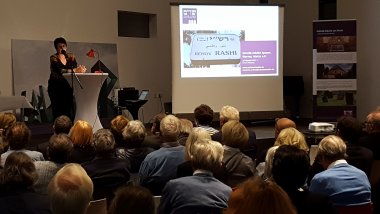
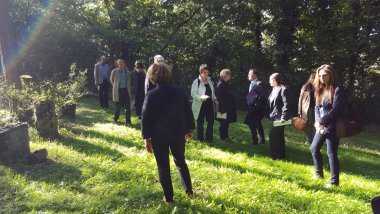
On September 11 and 12, 2017, the Scientific Advisory Council met in Mainz, supporting the application of the ShUM cities as UNESCO World Cultural Heritage. The experts from Germany and abroad, as well as invited guests with expertise on, for example, architecture of World heritage Sites, discussed the thesis on the outstanding universal value of the monuments in ShUM for two days. A public, well-attended event on September 11 in the New Synagogue Mainz informed about the impact of ShUM-cities to this day, the status quo of the monument application, guidelines in the preservation of monuments and the future management of synagogues rooted in the Middle Ages, cemeteries and the ritual baths in Speyer, Worms and Mainz. At the beginning of 2020, the nomination dossier will be handed over to UNESCO - intensive talks such as those in Mainz will continue to be essential for the application.
Jewish Cultural Days in Mannheim: »Wine may please one's heart«, September 14, 2017
Since biblical times, Judaism has been closely associated with wine, which also plays an important role in the religious life. And so it is no coincidence that there is now a high-quality wine culture in Israel. Esther Graf (Agency for Jewish culture) and Uwe Nowotsch (Israelwein.de) explained the importance of the wine in Judaism to numerous interested visitors and presented a selection of current Israeli wines. The exhibition "... see if the vine is blooming ... Wine in the Judaism" of the ShUM-Cities Ass. was also on display this evening.
Lecture Prof. Elisabeth Hollender, Speyer, September 19, 2017
As one of the leading experts on liturgical poetry from ShUM, Prof. Hollender in Speyer gave, in front of an interested audience, a most inspiring lecture on her research. The examples of liturgical poetry that she presented included the praise of God, the description of God's deeds, themes such as salvation and creation, but also the bond between God and the Jews. Last but not least, the crusades and the memory aspects developed on them were also discussed. Both entertaining and knowledgeable, Ms. Hollender shared with the numerous visitors, among them Lord Mayor Eger, her broad knowledge.
Presentation of Imagefilms ShUM-Cities Ass. on German Unity Day, October 2, 2017, Mainz
- German Unity Day, Mainz: Premiere of ShUM Image Movie1,24 MiB
- German Unity Day, Mainz: Premiere of ShUM Image Movie5,22 MiB
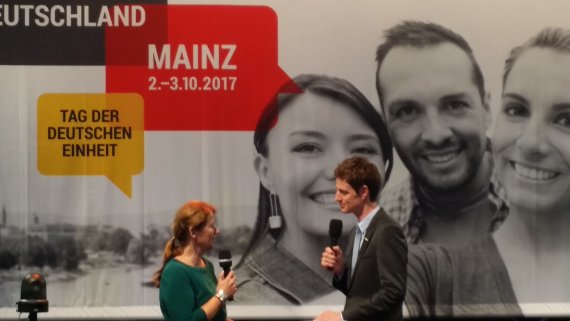
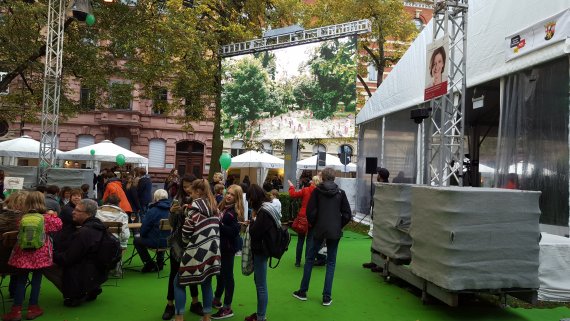
Monuments and spirituality: In order to make these unique Jewish spaces accessible to all citizens and the interested public the ShUM-Cities created image films. There is a film with a length of about 11 minutes (also in an English subtitled version), a three-minute picture as well as a 30-second picture-sheet to be used for trade fairs, receptions and advertising measures. The pictures, shot by artmetropol.tv (Mannheim), show impressively the sublime and spiritual significance of the monuments. Voices for SchUM Prime Minister Malu Dreyer or the Mayors of Speyer, Worms and Mainz emphasize the importance of Jewish heritage on the Rhine. In the Rhineland-Palatinate, the long version was celebrated on October 2 as part of the German Unity Day - and many people were amazed at the impressive monuments.
Workshop about Education and Museums in ShUM, October 16 to 18, 2017, Worms
- Workshop, October 2017, Worms1,24 MiB
- Workshop, Oct. 2017, Worms2,12 MiB
- Reception with Mayor Kissel, Town Hall Worms, Oct. 16, 20174,65 MiB
- Workshop October 2017, Worms1,25 MiB
- Workshop October 2017, Worms4,29 MiB
- Workshop October 2017, Worms3,43 MiB
- Workshop October 2017, Worms4,19 MiB
- Workshop October 2017, Worms4,69 MiB
- Workshop October 2017, Worms4,16 MiB
- Workshop October 2017, Worms3,93 MiB
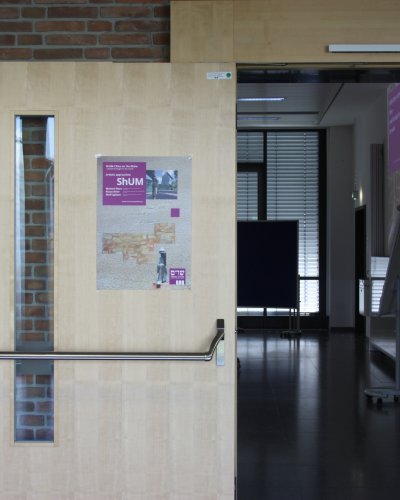
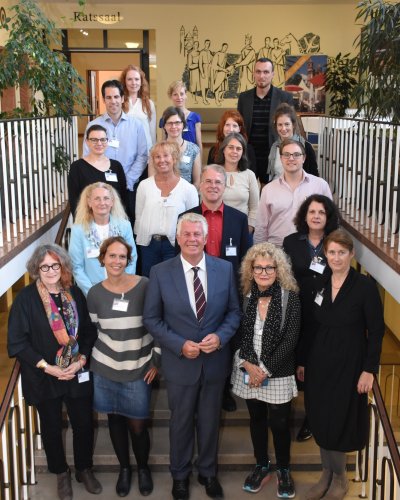
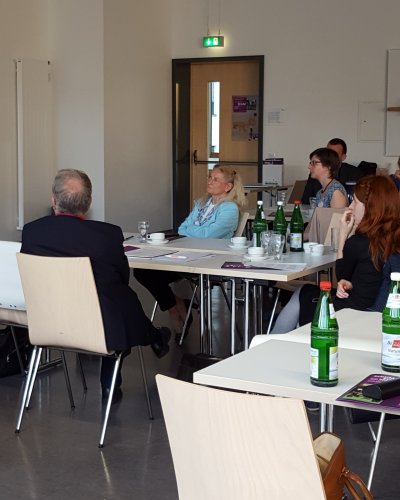
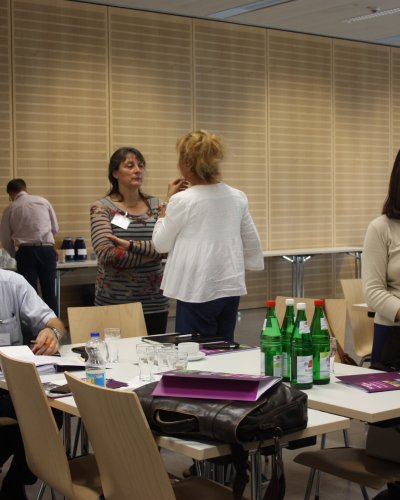
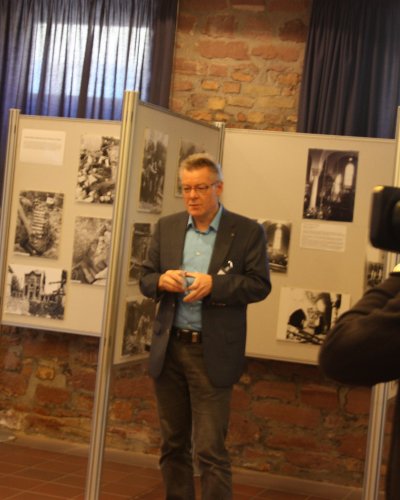
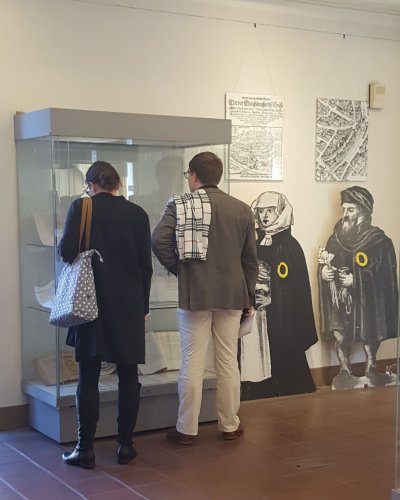
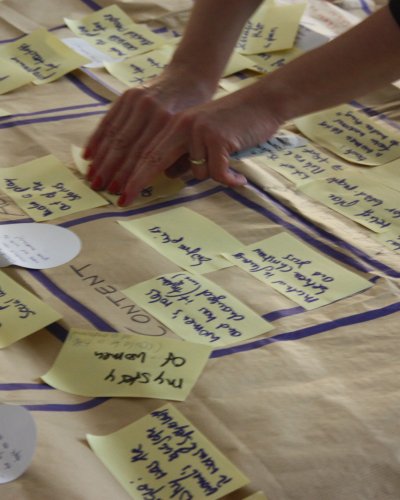
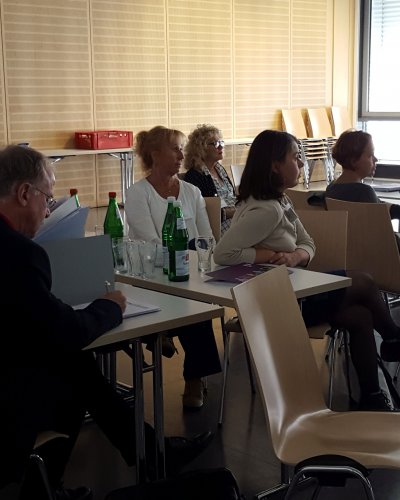

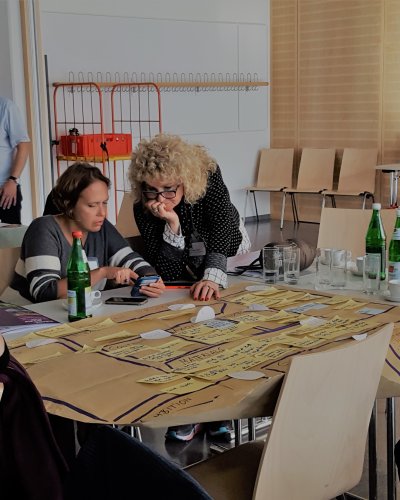
Three days, about 30 participants from Germany, Israel, Italy and Poland – a concentrated expertise for discussions in a workshop on future educational and museological activities on the Jewish monuments and the Jewish past in ShUM. The invitation to experts and e.g. to the Educational Center in Speyer, Jewish institutions, museums and pedagogues aimed at discussing creative, innovative and multiperspective approaches to ShUM. The inspiring debates were not centered solely on school and non-school education, but also on museums and not yet existent visitor centers. First results will be outlined in the application dossier for UNESCO resp. the management plan.
Dr. Dorothea Parak (MiQua, LVR-Jewish Museum in the Archaeological Quarter of Cologne) emphasizes: »In authentic locations, a focus can be set on the history of the German-Jewish Middle Ages in ShUM-cities, an era that has so far been only rarely used in mediation work, in school books or films. The people in the medieval Jewish communities have dealt with questions that are still relevant today, such as the status of women or marriage and partnership. Through numerous stories and biographies one can relate to the present and the reality of young people. This means that ShUM is also up-to-date and relevant to us today.«
Dr. Kamila Dabrowska (Museum POLIN for the history of the Polish Jews, Warsaw): »I found the ShUM project crucially important not only for the Jewish and for the German heritage, but also for the wider European and world-wide culture. The uniqueness of the three towns (Mainz, Worms and Speyer) and their Jewish history underlines the importance of diversity, understood in cultural, religious and ethnic terms. The existing material structures, being remnants of Jewish presence in the region, provide an overwhelming experience of immersing in the past, with the wider notion how the past exists and is treated in the presence. Both the past, understood as co-existence of divers religions and ethnic groups, and the present create a rich and dense spaces which might serve as a unique tool to educate about history, tolerance. I perceive the potential of ShUM initiatives (museum, visitor centers and various projects) as a spaces to create new standards in educating about the past and presence.«
Lecture at University Darmstadt: 16th Evenarí Lecture Series »Jewish Heritage«, October 23, 2017
The lecture series is aimed at students of all disciplines of the TU Darmstadt as well as at the interested public. It is interdisciplinary and therefore thematically deliberately wide-ranging: under the title »Jewish Heritage«, it traces the deep, multifaceted traces left by Jewish religion, Jewish culture and Jews even in European history to the present day. Susanne Urban from the ShUM-Cities Ass. reported during the very well-attended kick-off event about the monument heritage in ShUM, the UNESCO World Heritage application and the layers of history using the example of the synagogue in Worms.
Lecture Dr. Marc Grellert, October 26, 2017, Worms
Marc Grellert, co-founder of Architectura Virtualis and lecturer at TU Darmstadt, is a pioneer in the virtual reconstruction of vanished, destroyed or fragmented buildings or archaeological finds. Questions about memory and reconstruction are the basis for his work. In 1994 he first initiated the reconstruction of destroyed synagogues. Even the medieval synagogues in Worms and Speyer could be pictorially brought back to memory.
Opening of Exhibition on Wine and Judaism in City Hall Guntersblum, November 5, 2017
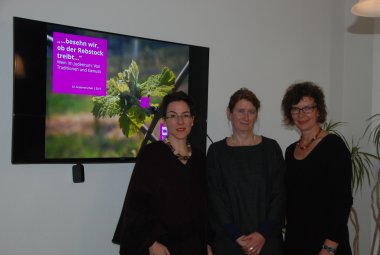
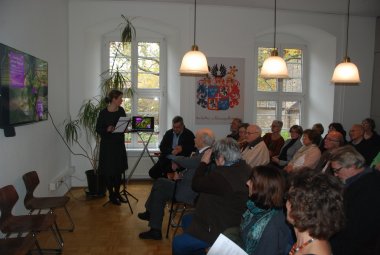
The stumbling stone initiative led by Ute Laubenheimer brought on the occasion of the commemoration days around November 9, 2017, the exhibition of the ShUM-Cities Ass. on Wine in Judaism in the town hall. After a welcome by Ute Laubenheimer, a short introduction followed by Dr. Andrea Seilheimer (second alderman). Afterwards there was an introduction with texts from the Song of Songs to Heine by Susanne Urban.
Movie and Lecture with Prof. Dr. Frank Stern, Speyer, November 23, 2017
An evening about tough Orthodox women, Mikva'ots spiritual spaces, spiced with Kabbalah and all forms of love. After a guided tour around the Mikveh in Speyer, around 40 visitors went to the Old Town Hall. Prof. Frank Stern then accompanied the audience in an enlightening and entertaining introduction to topics such as Orthodoxy, Mikva'ot, spiritual cleansing, womanly self-determination and women's spaces, in order to get them into the film »Ha-Sodot / The Secrets«. The film cast a spell over everyone present and long after the movie ended, there were talks about strong women and the central theme of love. Lord Mayor Eger was also enthusiastic about the lecture and the film.
Lecture Dr. Rainer Barzen, December 7, 2017, Mainz
The regulations adopted by the scholars of the three ShUM-communities, which are of central importance both for the inner-Jewish life of the Jews also for their relationship to the Christian environment bear witness to the golden age of prosperity of ShUM between the beginning of the 12th to the 14th century. Rainer Barzen from the Institute for Jewish Studies at the Westfälische Wilhelms-Universität Münster, an acknowledged expert on »Takkanot Kehillot SchUM«, described in his lecture where the traditional sources originated and explained the content of the ordinances and their implementation in the Jewish communities. At the same time Dr. Barzen also underlined how important to the understanding of ShUM is the reception history of these Takkanot, which extends to the present day.

